Below you will find a list of Forex Brokers that offer a wide range of various CFDs (contracts for difference) for trading. Basically, the CFD provides an opportunity to benefit from the difference between the entry and exit market price of a certain underlying asset. That kind of trading isn't actually accompanied by a transfer of ownership rights on the asset, it's more like a bet between a buyer and a seller. Depending on the price movement, one takes profits and the other takes losses. Most popular CFDs are based on currencies, indices, commodities and stocks, although some Forex Brokers also offer bonds, ETFs and even interest rate contracts for difference.

 RoboForex (2009)
Leverage: up to 1:2000
Deposit: from 10 USD
Spreads:
RoboForex (2009)
Leverage: up to 1:2000
Deposit: from 10 USD
Spreads: 


















 Dukascopy (1998)
Leverage: up to 1:200
Deposit: from 100 USD
Spreads:
Dukascopy (1998)
Leverage: up to 1:200
Deposit: from 100 USD
Spreads: 

 Admiral Markets (2001)
Leverage: up to 1:1000 *
Deposit: from 200 USD
Spreads:
Admiral Markets (2001)
Leverage: up to 1:1000 *
Deposit: from 200 USD
Spreads: 












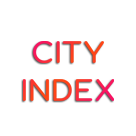 CityIndex (1983)
Leverage: up to 1:30
Deposit: from 10 USD
Spreads:
CityIndex (1983)
Leverage: up to 1:30
Deposit: from 10 USD
Spreads: 



 FxPro (2006)
Leverage: up to 1:500 *
Deposit: from 100 USD
Spreads:
FxPro (2006)
Leverage: up to 1:500 *
Deposit: from 100 USD
Spreads: 





 IC Markets (2007)
Leverage: up to 1:500 *
Deposit: from 200 USD
Spreads:
IC Markets (2007)
Leverage: up to 1:500 *
Deposit: from 200 USD
Spreads: 










 TradeView (2004)
Leverage: up to 1:400
Deposit: from 100 USD
Spreads:
TradeView (2004)
Leverage: up to 1:400
Deposit: from 100 USD
Spreads: 












 Anzo Capital (2015)
Leverage: up to 1:1000
Deposit: from 100 USD
Spreads:
Anzo Capital (2015)
Leverage: up to 1:1000
Deposit: from 100 USD
Spreads: 


 GO Markets (2006)
Leverage: up to 1:500 *
Deposit: from 200 AUD
Spreads:
GO Markets (2006)
Leverage: up to 1:500 *
Deposit: from 200 AUD
Spreads: 






 IG Markets (1974)
Leverage: up to 1:200 *
Deposit: from 300 USD
Spreads:
IG Markets (1974)
Leverage: up to 1:200 *
Deposit: from 300 USD
Spreads: 



 Forex.com (2001)
Leverage: up to 1:50 *
Deposit: from 100 USD
Spreads:
Forex.com (2001)
Leverage: up to 1:50 *
Deposit: from 100 USD
Spreads: 

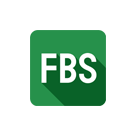 FBS (2009)
Leverage: up to 1:3000 *
Deposit: from 5 USD
Spreads:
FBS (2009)
Leverage: up to 1:3000 *
Deposit: from 5 USD
Spreads: 






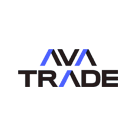 AvaTrade (2007)
Leverage: up to 1:400 *
Deposit: from 100 USD
Spreads:
AvaTrade (2007)
Leverage: up to 1:400 *
Deposit: from 100 USD
Spreads: 














 XM Group (2009)
Leverage: up to 1:1000 *
Deposit: from 5 USD
Spreads:
XM Group (2009)
Leverage: up to 1:1000 *
Deposit: from 5 USD
Spreads: 



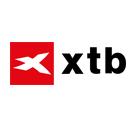 XTB Group (2004)
Leverage: up to 1:200
Deposit: from 250 USD
Spreads:
XTB Group (2004)
Leverage: up to 1:200
Deposit: from 250 USD
Spreads: 






 HQ Broker (2017)
Leverage: up to 1:400
Deposit: from 250 USD
Spreads:
HQ Broker (2017)
Leverage: up to 1:400
Deposit: from 250 USD
Spreads: 

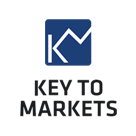 Key To Markets (2010)
Leverage: up to 1:500
Deposit: from 100 USD
Spreads:
Key To Markets (2010)
Leverage: up to 1:500
Deposit: from 100 USD
Spreads: 




 Fibo Group (1998)
Leverage: up to 1:3000
Deposit: from 1 USD
Spreads:
Fibo Group (1998)
Leverage: up to 1:3000
Deposit: from 1 USD
Spreads: 








 FP Markets (2005)
Leverage: up to 1:500 *
Deposit: from 100 AUD
Spreads:
FP Markets (2005)
Leverage: up to 1:500 *
Deposit: from 100 AUD
Spreads: 















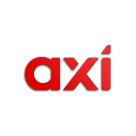 Axi (2007)
Leverage: up to 1:500 *
Deposit: from 1 USD
Spreads:
Axi (2007)
Leverage: up to 1:500 *
Deposit: from 1 USD
Spreads: 






 HYCM (1977)
Leverage: up to 1:500 *
Deposit: from 100 USD
Spreads:
HYCM (1977)
Leverage: up to 1:500 *
Deposit: from 100 USD
Spreads: 






 LMFX (2015)
Leverage: up to 1:1000
Deposit: from 50 USD
Spreads:
LMFX (2015)
Leverage: up to 1:1000
Deposit: from 50 USD
Spreads: 






 SwissQuote (2000)
Leverage: up to 1:100 *
Deposit: from 1000 USD
Spreads:
SwissQuote (2000)
Leverage: up to 1:100 *
Deposit: from 1000 USD
Spreads: 

 FXTM (2011)
Leverage: up to 1:2000 *
Deposit: from 10 USD
Spreads:
FXTM (2011)
Leverage: up to 1:2000 *
Deposit: from 10 USD
Spreads: 



















 AccentForex (2017)
Leverage: up to 1:500
Deposit: from 50 USD
Spreads:
AccentForex (2017)
Leverage: up to 1:500
Deposit: from 50 USD
Spreads: 





 CMC Markets (1989)
Leverage: up to 1:500 *
Deposit: from 200 USD
Spreads:
CMC Markets (1989)
Leverage: up to 1:500 *
Deposit: from 200 USD
Spreads: 


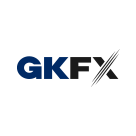 GKFX (2010)
Leverage: up to 1:1000
Deposit: from 50 USD
Spreads:
GKFX (2010)
Leverage: up to 1:1000
Deposit: from 50 USD
Spreads: 




 NAGA (2015)
Leverage: up to 1:500
Deposit: from 50 USD
Spreads:
NAGA (2015)
Leverage: up to 1:500
Deposit: from 50 USD
Spreads: 












 Grand Capital (2006)
Leverage: up to 1:1000
Deposit: from 10 USD
Spreads:
Grand Capital (2006)
Leverage: up to 1:1000
Deposit: from 10 USD
Spreads: 















 AAAFx (2007)
Leverage: up to 1:500 *
Deposit: from 10 USD
Spreads:
AAAFx (2007)
Leverage: up to 1:500 *
Deposit: from 10 USD
Spreads: 













 Plus500 (2008)
Leverage: up to 1:300
Deposit: from 100 USD
Spreads:
Plus500 (2008)
Leverage: up to 1:300
Deposit: from 100 USD
Spreads: 



 IQ Option (2014)
Leverage: up to 1:500 *
Deposit: from 10 USD
Spreads:
IQ Option (2014)
Leverage: up to 1:500 *
Deposit: from 10 USD
Spreads: 











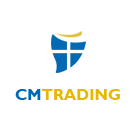 CMTrading (2012)
Leverage: up to 1:200
Deposit: from 250 USD
Spreads:
CMTrading (2012)
Leverage: up to 1:200
Deposit: from 250 USD
Spreads: 





 EightCap (2009)
Leverage: up to 1:500
Deposit: from 100 USD
Spreads:
EightCap (2009)
Leverage: up to 1:500
Deposit: from 100 USD
Spreads: 










 LiteFinance (2005)
Leverage: up to 1:1000
Deposit: from 50 USD
Spreads:
LiteFinance (2005)
Leverage: up to 1:1000
Deposit: from 50 USD
Spreads: 











 MTrading (2014)
Leverage: up to 1:1000
Deposit: from 100 USD
Spreads:
MTrading (2014)
Leverage: up to 1:1000
Deposit: from 100 USD
Spreads: 







 BCR (2008)
Leverage: up to 1:400
Deposit: from 300 USD
Spreads:
BCR (2008)
Leverage: up to 1:400
Deposit: from 300 USD
Spreads: 






 Windsor Brokers (1988)
Leverage: up to 1:500 *
Deposit: from 100 USD
Spreads:
Windsor Brokers (1988)
Leverage: up to 1:500 *
Deposit: from 100 USD
Spreads: 





 SimpleFX (2014)
Leverage: up to 1:500
Deposit: from 1 USD
Spreads:
SimpleFX (2014)
Leverage: up to 1:500
Deposit: from 1 USD
Spreads: 






 Forex4you (2007)
Leverage: up to 1:1000
Deposit: from 1 USD
Spreads:
Forex4you (2007)
Leverage: up to 1:1000
Deposit: from 1 USD
Spreads: 





 UFX (2007)
Leverage: up to 1:400
Deposit: from 100 USD
Spreads:
UFX (2007)
Leverage: up to 1:400
Deposit: from 100 USD
Spreads: 












 NPBFX (1996)
Leverage: up to 1:1000
Deposit: from 10 USD
Spreads:
NPBFX (1996)
Leverage: up to 1:1000
Deposit: from 10 USD
Spreads: 









 INGOT Brokers (2006)
Leverage: up to 1:3000
Deposit: from 10 USD
Spreads:
INGOT Brokers (2006)
Leverage: up to 1:3000
Deposit: from 10 USD
Spreads: 



 Advanced Markets (2006)
Leverage: up to 1:100
Deposit: from 2500 USD
Spreads:
Advanced Markets (2006)
Leverage: up to 1:100
Deposit: from 2500 USD
Spreads: 
 NordFX (2008)
Leverage: up to 1:1000
Deposit: from 10 USD
Spreads:
NordFX (2008)
Leverage: up to 1:1000
Deposit: from 10 USD
Spreads: 










 Renesource Capital (1998)
Leverage: up to 1:30
Deposit: from 10 USD
Spreads:
Renesource Capital (1998)
Leverage: up to 1:30
Deposit: from 10 USD
Spreads: 
 EVFX (2011)
Leverage: up to 1:30
Deposit: from 500 USD
Spreads:
EVFX (2011)
Leverage: up to 1:30
Deposit: from 500 USD
Spreads: 
 AMarkets (2007)
Leverage: up to 1:3000
Deposit: from 100 USD
Spreads:
AMarkets (2007)
Leverage: up to 1:3000
Deposit: from 100 USD
Spreads: 









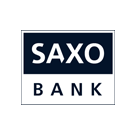 Saxo Bank (1992)
Leverage: up to 1:30
Deposit: from 2000 USD
Spreads:
Saxo Bank (1992)
Leverage: up to 1:30
Deposit: from 2000 USD
Spreads: 

 ICM Capital (2011)
Leverage: up to 1:30
Deposit: from 200 USD
Spreads:
ICM Capital (2011)
Leverage: up to 1:30
Deposit: from 200 USD
Spreads: 



 Pepperstone (2010)
Leverage: up to 1:200
Deposit: from 200 AUD
Spreads:
Pepperstone (2010)
Leverage: up to 1:200
Deposit: from 200 AUD
Spreads: 









 Markets.com (2008)
Leverage: up to 1:300 *
Deposit: from 100 USD
Spreads:
Markets.com (2008)
Leverage: up to 1:300 *
Deposit: from 100 USD
Spreads: 







 Think Markets (2010)
Leverage: up to 1:500 *
Deposit: from 5 USD
Spreads:
Think Markets (2010)
Leverage: up to 1:500 *
Deposit: from 5 USD
Spreads: 







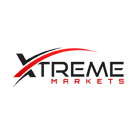 Xtream Markets (2015)
Leverage: up to 1:1000
Deposit: from 5 USD
Spreads:
Xtream Markets (2015)
Leverage: up to 1:1000
Deposit: from 5 USD
Spreads: 










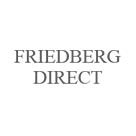 Friedberg Direct (2007)
Leverage: up to 1:50
Deposit: from 100 CAD
Spreads:
Friedberg Direct (2007)
Leverage: up to 1:50
Deposit: from 100 CAD
Spreads: 

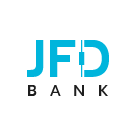 JFD Bank (2011)
Leverage: up to 1:400 *
Deposit: from 500 USD
Spreads:
JFD Bank (2011)
Leverage: up to 1:400 *
Deposit: from 500 USD
Spreads: 




 FreshForex (2004)
Leverage: up to 1:2000
Deposit: from 10 USD
Spreads:
FreshForex (2004)
Leverage: up to 1:2000
Deposit: from 10 USD
Spreads: 












 JustForex (2012)
Leverage: up to 1:3000
Deposit: from 1 USD
Spreads:
JustForex (2012)
Leverage: up to 1:3000
Deposit: from 1 USD
Spreads: 







 ActivTrades (2001)
Leverage: up to 1:400 *
Deposit: from 500 GBP
Spreads:
ActivTrades (2001)
Leverage: up to 1:400 *
Deposit: from 500 GBP
Spreads: 





 Infinox (2009)
Leverage: up to 1:1000
Deposit: from 50 USD
Spreads:
Infinox (2009)
Leverage: up to 1:1000
Deposit: from 50 USD
Spreads: 








 BDSwiss (2012)
Leverage: up to 1:2000
Deposit: from 10 USD
Spreads:
BDSwiss (2012)
Leverage: up to 1:2000
Deposit: from 10 USD
Spreads: 











 MultiBank Group (2005)
Leverage: up to 1:500
Deposit: from 50 USD
Spreads:
MultiBank Group (2005)
Leverage: up to 1:500
Deposit: from 50 USD
Spreads: 








 World Forex (2007)
Leverage: up to 1:1000
Deposit: from 1 USD
Spreads:
World Forex (2007)
Leverage: up to 1:1000
Deposit: from 1 USD
Spreads: 











 FXPrimus (2009)
Leverage: up to 1:1000
Deposit: from 15 USD
Spreads:
FXPrimus (2009)
Leverage: up to 1:1000
Deposit: from 15 USD
Spreads: 








 Capex (2016)
Leverage: up to 1:300 *
Deposit: from 1000 USD
Spreads:
Capex (2016)
Leverage: up to 1:300 *
Deposit: from 1000 USD
Spreads: 





 ADSS (2011)
Leverage: up to 1:500 *
Deposit: from 100 USD
Spreads:
ADSS (2011)
Leverage: up to 1:500 *
Deposit: from 100 USD
Spreads: 


 VantageFX (2009)
Leverage: up to 1:500
Deposit: from 200 USD
Spreads:
VantageFX (2009)
Leverage: up to 1:500
Deposit: from 200 USD
Spreads: 









 TeleTrade (2000)
Leverage: up to 1:500
Deposit: from 10 USD
Spreads:
TeleTrade (2000)
Leverage: up to 1:500
Deposit: from 10 USD
Spreads: 






 EagleFX (2019)
Leverage: up to 1:500
Deposit: from 10 USD
Spreads:
EagleFX (2019)
Leverage: up to 1:500
Deposit: from 10 USD
Spreads: 


 BlackBull Markets (2014)
Leverage: up to 1:500
Deposit: from 1 USD
Spreads:
BlackBull Markets (2014)
Leverage: up to 1:500
Deposit: from 1 USD
Spreads: 











 Alvexo (2014)
Leverage: up to 1:300
Deposit: from 500 EUR
Spreads:
Alvexo (2014)
Leverage: up to 1:300
Deposit: from 500 EUR
Spreads: 





 HyperForex (2017)
Leverage: up to 1:1000
Deposit: from 1 USD
Spreads:
HyperForex (2017)
Leverage: up to 1:1000
Deposit: from 1 USD
Spreads: 









 Swiss Markets (2016)
Leverage: up to 1:500
Deposit: from 200 USD
Spreads:
Swiss Markets (2016)
Leverage: up to 1:500
Deposit: from 200 USD
Spreads: 







 TIO Markets (2019)
Leverage: up to 1:1000 *
Deposit: from 10 USD
Spreads:
TIO Markets (2019)
Leverage: up to 1:1000 *
Deposit: from 10 USD
Spreads: 







 Oinvest (2018)
Leverage: up to 1:400
Deposit: from 250 USD
Spreads:
Oinvest (2018)
Leverage: up to 1:400
Deposit: from 250 USD
Spreads: 



 HFTrading (2018)
Leverage: up to 1:30
Deposit: from 250 USD
Spreads:
HFTrading (2018)
Leverage: up to 1:30
Deposit: from 250 USD
Spreads: 



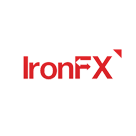 IronFX (2010)
Leverage: up to 1:2000
Deposit: from 100 USD
Spreads:
IronFX (2010)
Leverage: up to 1:2000
Deposit: from 100 USD
Spreads: 






 xChief (2014)
Leverage: up to 1:1000
Deposit: from 10 USD
Spreads:
xChief (2014)
Leverage: up to 1:1000
Deposit: from 10 USD
Spreads: 











 Skilling (2016)
Leverage: up to 1:500
Deposit: from 100 USD
Spreads:
Skilling (2016)
Leverage: up to 1:500
Deposit: from 100 USD
Spreads: 










 XBTFX (2019)
Leverage: up to 1:500
Deposit: from 0.0001 BTC
Spreads:
XBTFX (2019)
Leverage: up to 1:500
Deposit: from 0.0001 BTC
Spreads: 










Forex brokers now offer a wide variety of assets from different asset classes. These assets are offered as Contract-for-Difference assets or CFDs. This is a contract between a dealer and a trader to settle the difference between the entry price at the time of contract commencement, and the exit price on contract expiration, without physical exchange of the underlying asset in question.
To put it in another way, a CFD is a trade contract based on an underlying asset between a buyer and a seller, in which both agree that the price differential of the asset between the start and end of the trade contract will be paid by one party to the other. The physical asset is not owned or exchanged by any of the two parties.
The fact that there is no physical ownership or exchange of the physical asset between both parties makes this form of trading easy to offer on trading platforms, following the same principles of online forex trading where the traders do not physically exchange the currencies being traded. Also, traders can go long or short on the CFD, enabling profits to be made with long orders on rising prices, and short orders on falling prices.
Unlike a decade ago when CFDs were restricted to stocks and a few indices, it is now possible to trade a wide variety of assets as CFDs.
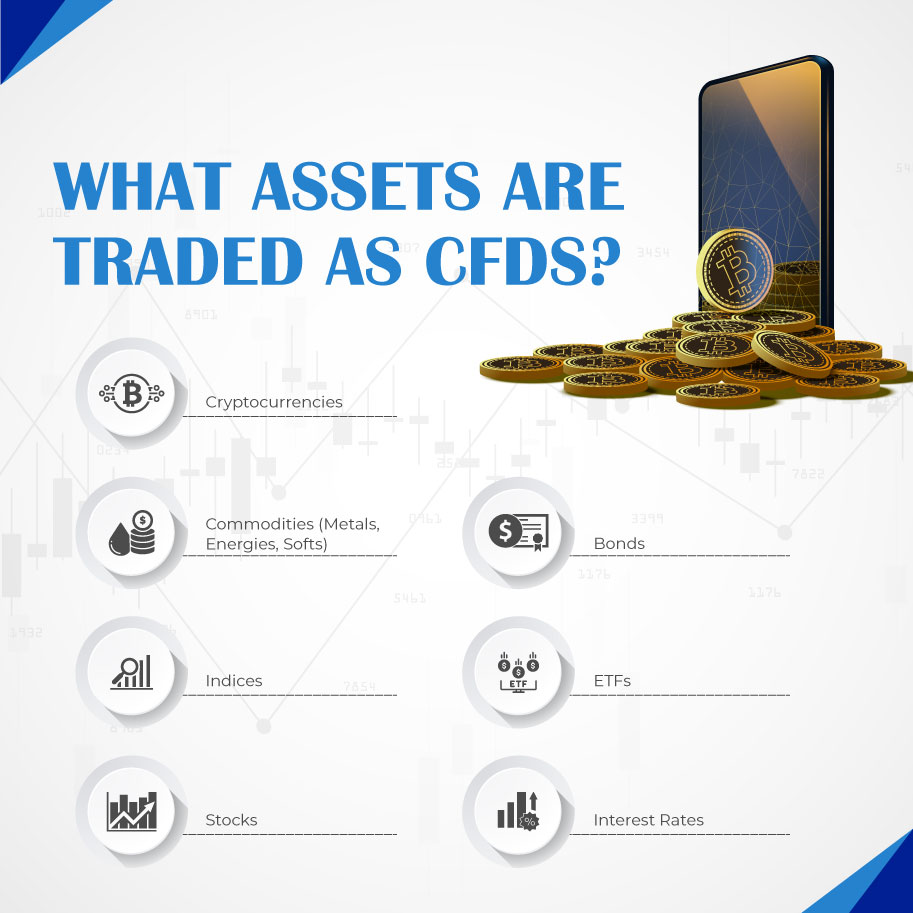
The CFD forex brokers in our list offer the following asset classes as CFDs:
Just like in the forex market, there are two types of CFD forex brokers. We have the market makers, who operate a dealing desk and offer CFD trading in-house, and we have the direct market access providers, who pool pricing from several liquidity providers and offer same to their clients without passing these through a dealing desk. There are also hybrid brokers, who offer both models to different categories of clients.
Dealing desk brokers operate in two ways. For a majority of clients, pricing and order fulfilment is done at the dealing desk, where wholesale positions obtained from the interbank market are chopped down into smaller bits that their clients can trade. Orders which are too large or which may constitute counterparty risk are sent to the interbank market.
Direct market access (DMA) brokers deal with clients who have wholesale capacity. As the interbank market requires large volume trades, only clients with the financial muscle to operate at this level are taken. Pricing is aggregated from several providers and routed to the trader, who selects a set of bid-ask prices and place orders based on these prices. Orders are then sent to the interbank market, or to other prime brokers who can perform fulfilment.
In selecting the CFD brokers listed on this site, certain criteria were used. The ultimate aim was to present brokers that would guarantee CFD traders the best possible deals with great user experience. Factors used in the determination of the best CFD forex brokers include: regulation, trading software type, types of accounts provided (with features) and contract specifications (commissions and spreads).
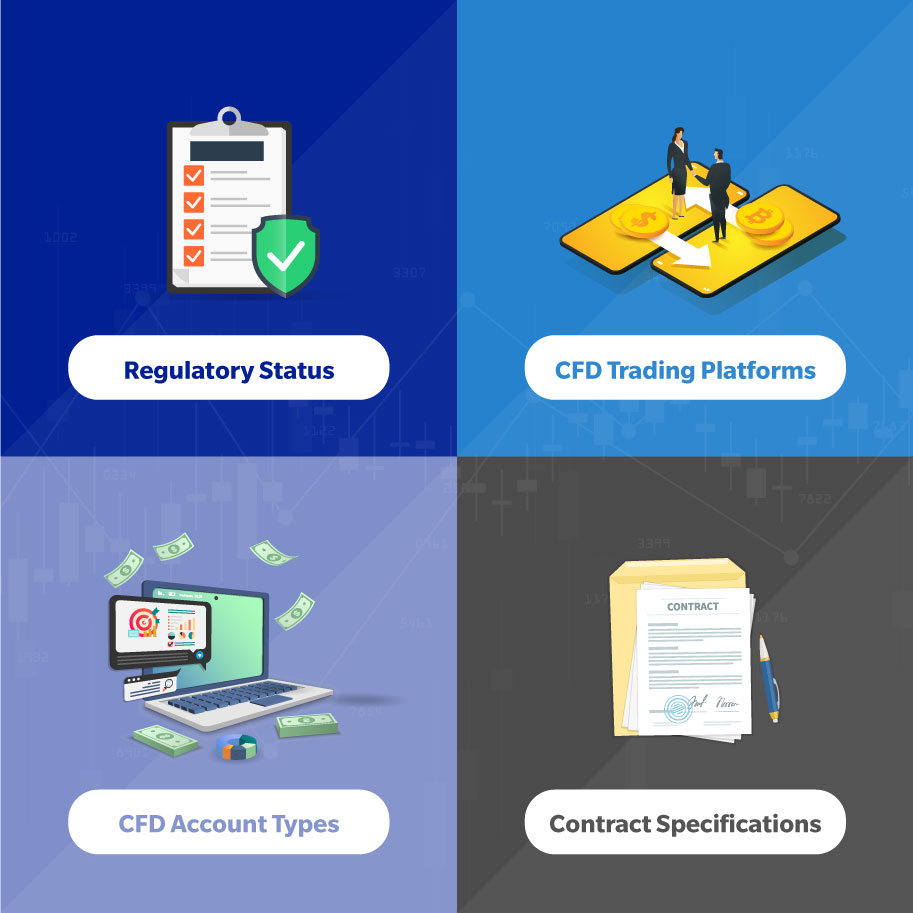
Regulation is a key factor in consumer protection. It ensures that there are laid down rules by which brokers must abide, for the safety of their clients. Regulatory protocols are enforced by the regulatory agencies. If anything goes wrong, relief or arbitration can be sought by the consumer.
Some of the requirements for running a CFD forex brokerage, as enforced by regulators are as follows:
The CFD forex brokers in our list conform to these requirements and this list is updated regularly as new information on regulation becomes available.
Many of the brokers in our list offer the MT4 and MT5, which have excellent facilities for CFD trading. Indeed, the MT4 has become the mainstay of CFD trading in the retail segment of the market, as it has great asset listings, and charting/analytical tools to enable multi-asset technical analysis.
No two traders are created the same. That is why compartmentalization of traders using an account differentiation system is gradually becoming the norm. Creating separate accounts for beginners, advanced traders or professional level traders ensures that each category of traders are provided with tools they can work with, suitable for their level of expertise. The needs of advanced traders will differ greatly from those of beginners, so it is vital to provide accounts that meet the demands of each trader class.
In terms of contract specifications, it is important for traders to know the conditions under which a CFD asset is traded. Trading an ETF CFD is not the same as trading a CFD on crude oil. In the same vein, what a trader pays in commissions or spreads on a crypto CFD will be different from what the trader will pay when trading the Nasdaq100 Index CFD. Therefore, the best CFD forex brokers will ensure that their clients know clearly what they are getting into whenever they decide to trade a particular asset.
It must also be mentioned that some brokers will charge commissions and spreads on certain CFDs, while others may only charge spreads. The only way for a trader to get this information is for a broker to spell out the conditions of trading on each asset very clearly. This is usually done using a contract specifications table on the individual broker websites.
The contract specifications include information on the following:
For currency pairs, each metric is probably the same from one currency to another. But for CFDs which cover several asset classes, the information will be totally different from one asset class to another. As a trader, access to this information is absolutely crucial to be able to plan your trades and risk management strategies. All the CFD forex brokers in our list have pages with contract specification tables that clearly spell out what you can expect to encounter when you trade a CFD asset.